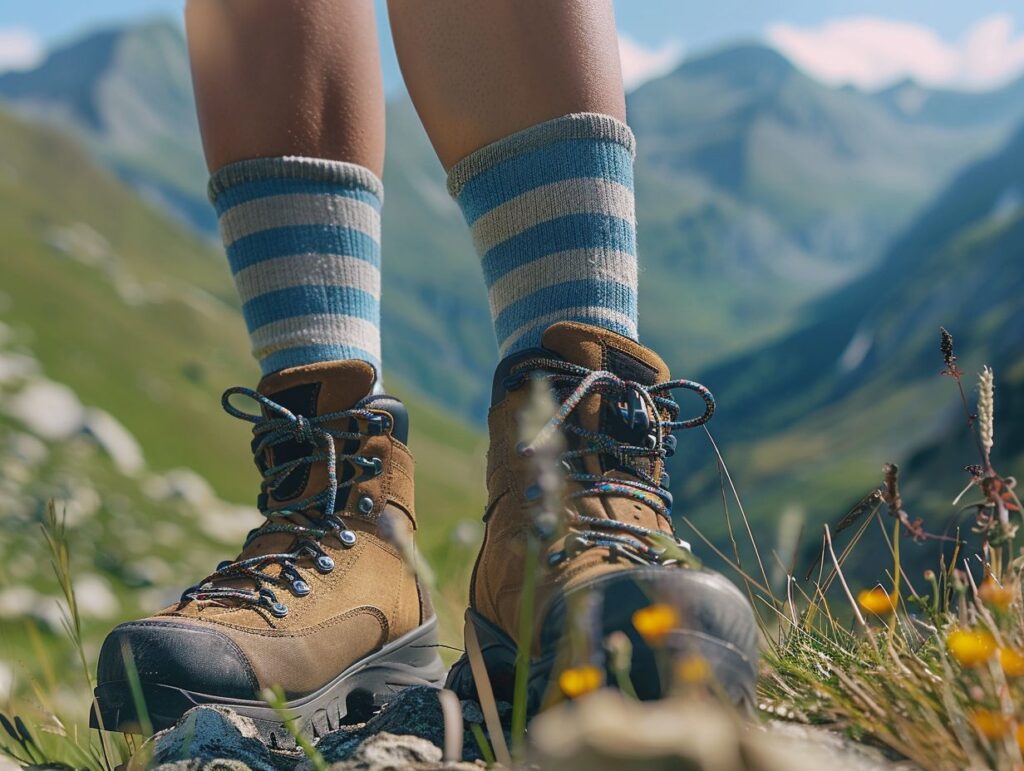Are you an avid hiker who is tired of dealing with painful blisters ruining your outdoor adventures?
In this comprehensive guide, we will explore the common causes of blisters while hiking, such as friction, moisture, and ill-fitting footwear.
We will also provide you with practical tips on how to prevent blisters by choosing the right footwear, wearing moisture-wicking socks, and using foot powders or lubricants.
We will discuss effective methods for treating blisters on the trail and offer advice on when to seek medical attention.
Stay tuned to learn how to keep your feet blister-free and enjoy your hikes to the fullest!
Key Takeaways:
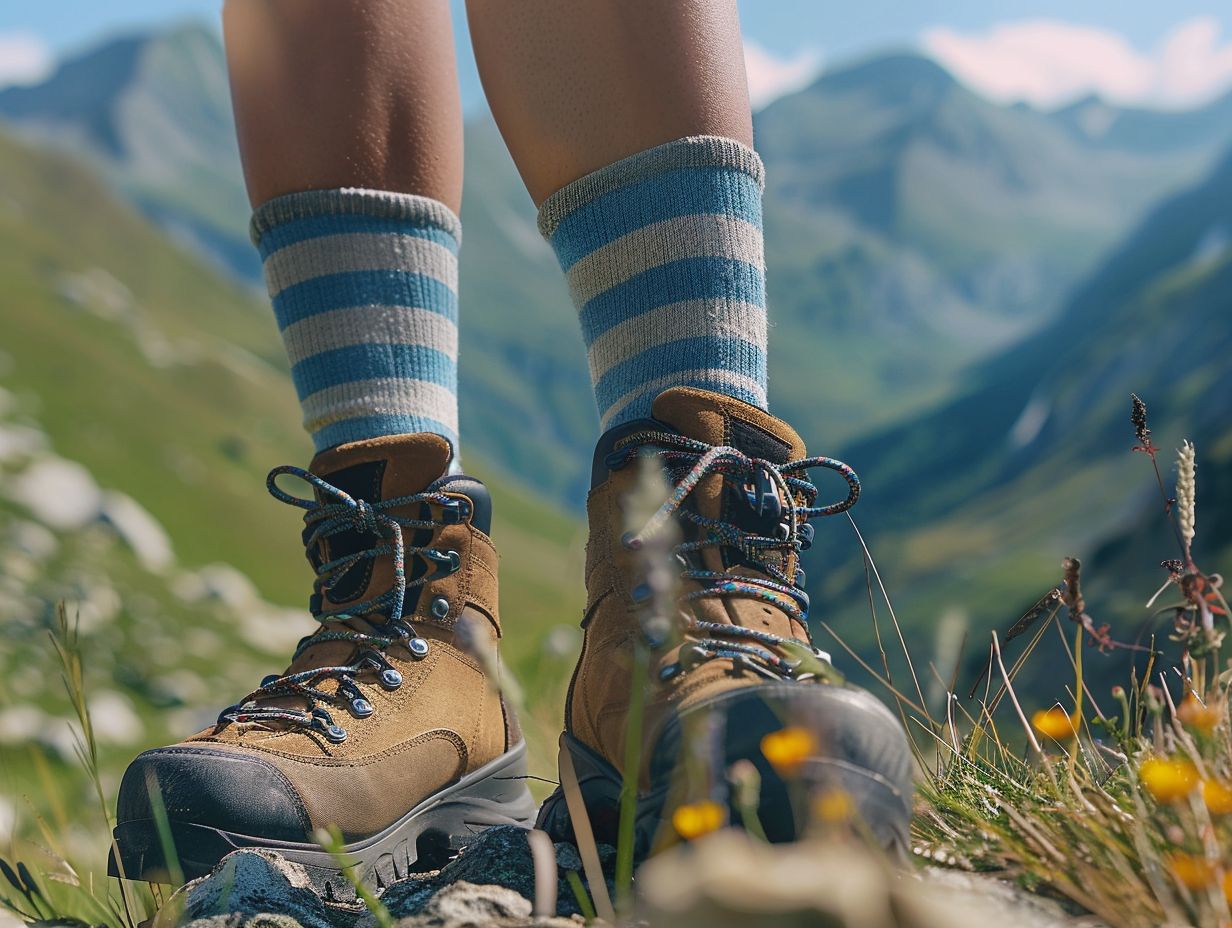
- Choose the right footwear and wear moisture-wicking socks to prevent blisters while hiking.
- Clean and protect blisters, and seek medical attention if needed, to treat blisters while hiking.
- Break in new shoes, keep feet clean and dry, and use moleskin or blister pads to prevent blisters from forming again.
How to Prevent Blisters While Hiking?
The prevention of blisters during hiking requires the selection of suitable footwear, the use of moisture-wicking socks, and the application of various techniques to keep dry and reduce friction on the feet.
1. Choose the Right Footwear
The selection of appropriate footwear, particularly hiking boots that are well-fitted and offer adequate support, plays a crucial role in preventing the occurrence of blisters during hiking expeditions. When making a choice of hiking boots, individuals are advised to carefully consider the fit of the footwear.
It is advisable to try on the boots while wearing suitable hiking socks to ensure a snug yet comfortable fit. The selection of boots with good ankle support is highly recommended as this feature is essential for navigating challenging terrains.
Additionally, it is important to consider the break-in period; selecting boots that do not necessitate extensive breaking in is preferable to avoid discomfort during hikes.
Furthermore, the quality of materials used in the boots, such as waterproof and breathable fabrics, durable soles, and reliable traction, are significant factors to take into account when choosing an appropriate pair of hiking boots.
2. Wear Moisture-wicking Socks
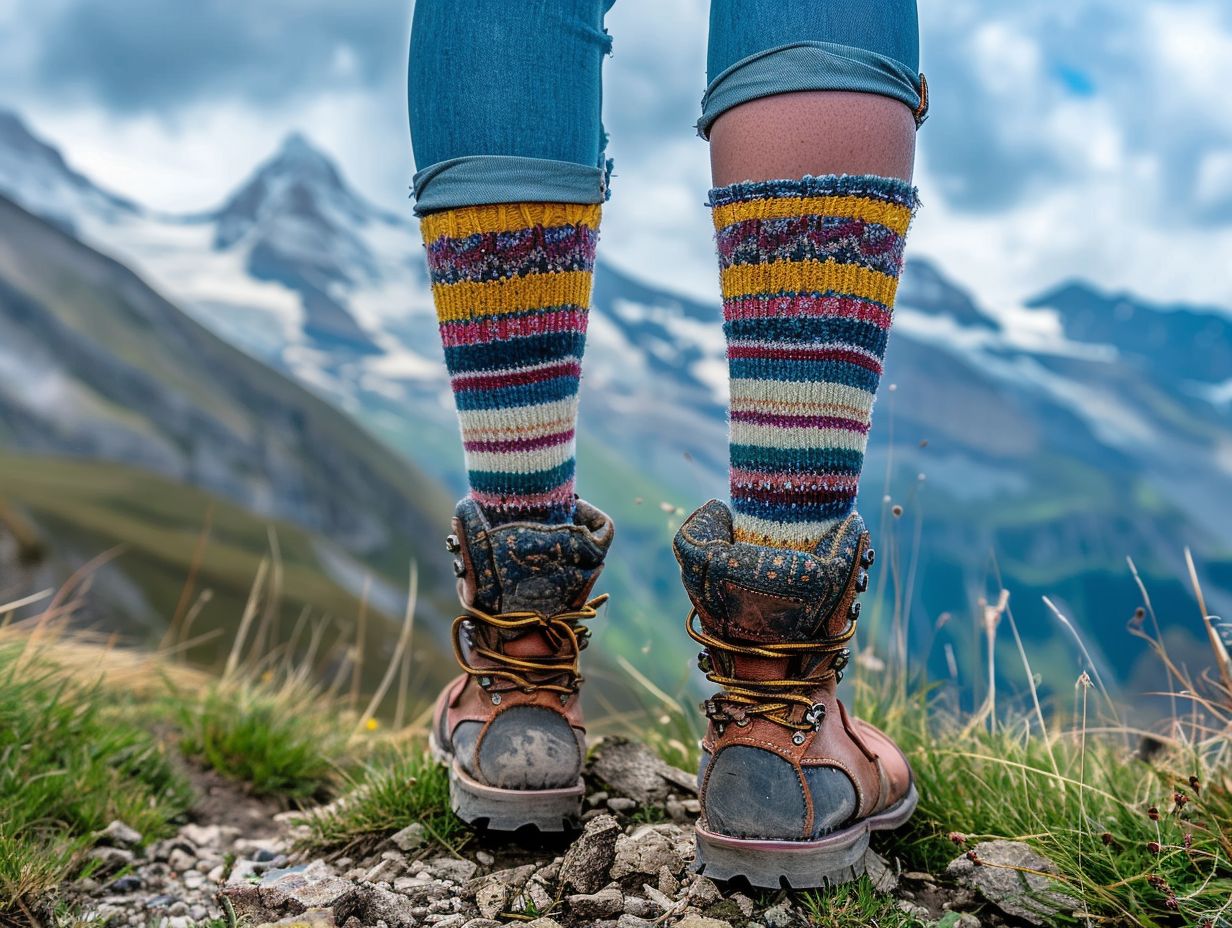
The utilisation of moisture-wicking socks can serve to maintain optimal dryness of the feet and mitigate the occurrence of blisters during hiking endeavors.
Through the effective absorption and evaporation of moisture from the skin, these specialised socks inhibit the build-up of sweat, thereby mitigating potential discomfort and irritation. Consequently, this serves to diminish the degree of friction between the foot and the shoe, thereby diminishing the probability of blister formation.
When deliberating on sock selection for hiking purposes, it is advisable to opt for those featuring targeted cushioning in areas of heightened impact, thus supplying supplementary support and safeguarding.
Additionally, the consideration of incorporating sock liners alongside the moisture-wicking socks facilitates enhanced moisture control and friction reduction, thus ensuring a heightened level of comfort and enjoyment throughout the hiking activity.
3. Use Foot Powders or Lubricants
The utilisation of foot powders or lubricants serves to minimise friction and moisture, consequently aiding in the prevention of blisters during hiking activities.
Foot powders, including talcum powder, function by absorbing sweat and diminishing friction between the foot and the hiking boot. It is recommended to apply them before donning socks to ensure uniform distribution.
On the other hand, lubricants such as petroleum jelly establish a protective shield and are particularly advantageous when applied to areas prone to high levels of friction like the heels and toes. It is imperative to periodically reapply these products, especially during extended hiking excursions, to uphold their efficacy in averting blisters.
4. Keep Your Feet Dry
Maintaining dry feet is crucial to minimise the occurrence of blisters while hiking, as excessive moisture can weaken the skin and elevate the potential for friction-induced ailments.
It is advisable to select moisture-wicking socks that actively draw perspiration away from the feet, thereby ensuring they remain dry and comfortable. Carrying additional pairs of socks facilitates changing them as needed during the hike, particularly in the event of encountering damp conditions.
The selection of appropriate footwear with adequate ventilation also contributes to the upkeep of dry feet. By avoiding water-saturated trails and adhering to well-preserved paths, the likelihood of feet becoming saturated during outdoor excursions can be significantly reduced.
How to Treat Blisters While Hiking?
The management of blisters during hiking involves the meticulous cleaning of the affected area, ensuring sufficient protection, and implementing suitable measures to alleviate discomfort and minimise the risk of further injury.
1. Clean the Blister
The initial step in treating a blister during hiking involves cleaning the blister with antiseptic wipes or mild soap and water. It is imperative to observe proper hand hygiene before making contact with the blister to prevent the introduction of harmful bacteria.
Following cleansing, the area should be gently dried with a sterile gauze pad to eliminate excess moisture. It is advisable to refrain from using alcohol or hydrogen peroxide directly on the blister, as they may hinder the healing process. Instead, the application of antibiotic ointment is recommended to safeguard the treated area.
It is essential to maintain optimal hygiene standards throughout the healing period to prevent infections and facilitate expedited recovery.
2. Protect the Blister
It is advisable to protect a blister by applying a plaster or moleskin, which can help to prevent further damage and alleviate discomfort while engaging in hiking activities.
Before the application of a plaster or moleskin, it is essential to ensure that the blister area is clean and dry. The moleskin or blister pad should be trimmed to a size slightly larger than the blister itself to ensure sufficient coverage.
Carefully position the padding over the blister, ensuring a secure adhesion to the skin. To affix the protective covering, one may use medical tape or adhesive strips. When wrapping the tape or strips around the affected area, it is crucial to ensure a snug fit that allows for proper circulation without being overly tight.
Regular monitoring is recommended to confirm that the covering remains in place effectively during physical movement.
3. Drain the Blister (if necessary)
The process of draining a blister should be approached cautiously and only when deemed absolutely necessary to alleviate pain and pressure, with meticulous care taken to prevent infection.
- Before commencing the draining procedure, it is imperative to cleanse the blister and the surrounding skin with a gentle soap and water solution.
- Subsequently, sterilise a small needle using rubbing alcohol or an antiseptic solution, ensuring complete dryness before utilisation.
- Carefully puncture the blister near its periphery, allowing the fluid to drain naturally. Avoid exerting excessive pressure on the blister, as this can elevate the risk of infection.
- Following the drainage process, apply an antibiotic ointment to the area and cover it with a sterile dressing to shield it from contaminants and bacteria.
- It is essential to closely monitor the blister for any indications of infection such as escalating redness, discomfort, or discharge, and promptly seek medical assistance if necessary.
4. Take Pain Relief Medication
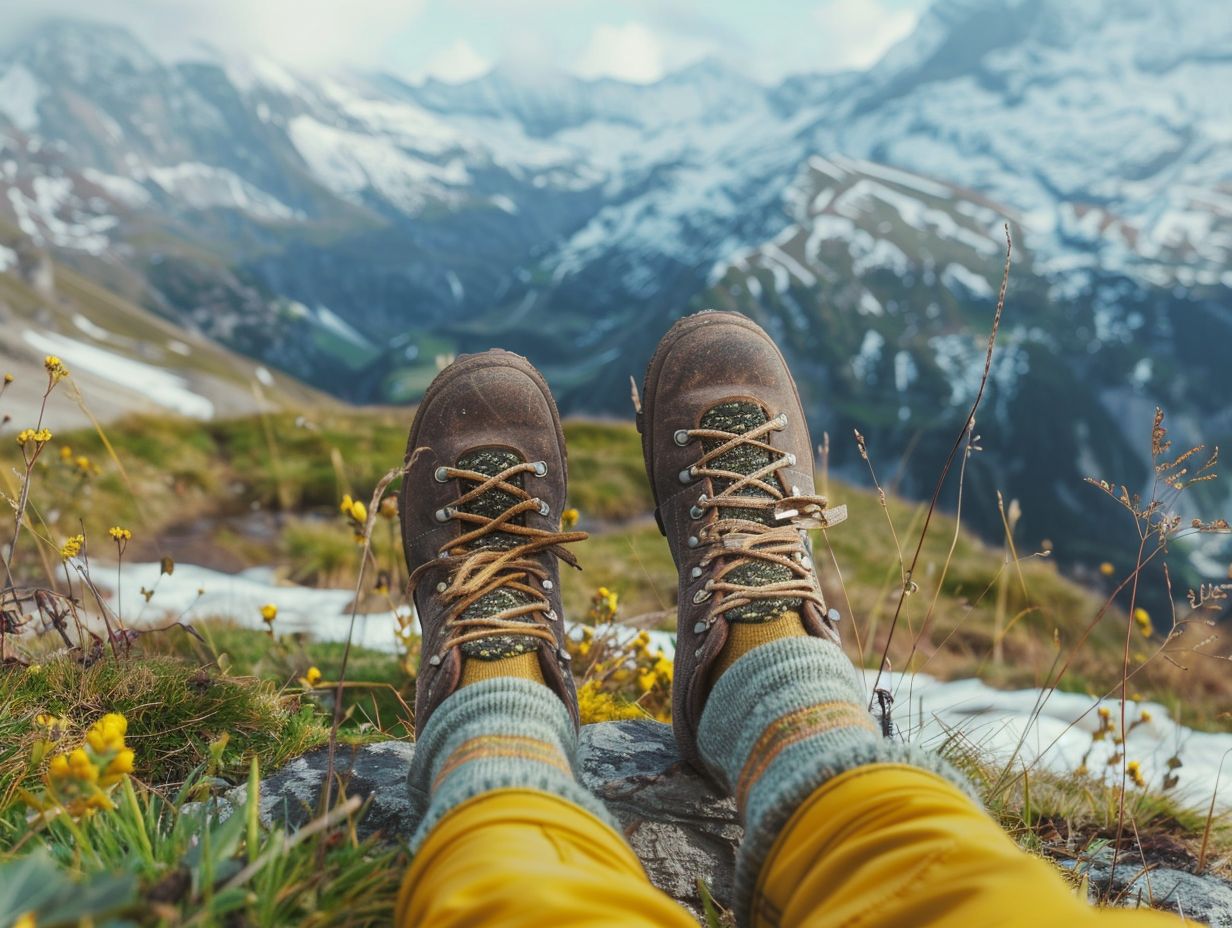
The utilisation of pain relief medication can effectively manage discomfort caused by blisters during hiking activities, enabling individuals to proceed with their trek while experiencing reduced levels of pain. Commonly used over-the-counter pain relief medications suitable for hiking include ibuprofen, paracetamol, and aspirin.
Ibuprofen, known for its effectiveness in reducing inflammation and pain, is typically administered at a dose of 200-400mg every 4-6 hours as required.
Paracetamol, recognised for its pain-relieving and anti-fever properties, is generally prescribed at a dose of 325-650mg every 4-6 hours, with a daily limit not exceeding 3,000-4,000mg. Aspirin can also aid in pain management and inflammation reduction, with a recommended dose of 325-650mg every 4 hours as necessary.
It is essential to adhere strictly to the dose guidelines provided on the medication label and seek guidance from a healthcare professional as necessary.
When to Seek Medical Attention for Blisters?
Medical attention should be recommended for blisters exhibiting signs of infection, such as increased redness, swelling, presence of pus, or persistent severe pain that does not alleviate with basic treatment.
If the blister becomes warm to the touch, shows signs of spreading, or if the individual experiences a fever, it is imperative to promptly seek guidance from a healthcare professional. Particularly for individuals with compromised immune systems, diabetes, or circulatory conditions, even minor blisters can pose serious complications if left untreated.
Implementing preventive measures, including maintaining cleanliness and covering the blister, refraining from puncturing it, and utilising appropriate footwear to prevent friction, can assist in reducing the likelihood of infection. Adherence to proper hygiene practices, such as regular handwashing and utilization of clean socks and bandages, is also paramount in averting bacterial transmission.
How to Prevent Blisters from Forming Again?
Preventing the recurrence of blisters entails the process of properly breaking in new shoes prior to hiking, maintaining cleanliness and dryness of the feet, ensuring the use of correctly fitting shoes and socks, and employing protective measures such as moleskin or blister pads.
1. Break in New Shoes Before Hiking
It is essential to wear in new shoes before embarking on a hike to prevent blisters. This process allows the shoes to conform to the shape of your feet, reducing the risk of friction and discomfort.
The procedure of wearing in new hiking boots may require some patience, but the benefits are significant in ensuring comfort and minimising foot pain during outdoor activities. To effectively wear in new boots, it is recommended to wear them indoors for brief periods initially to allow your feet to adjust to the new fit.
Gradually increasing the duration of wear and walking distances will aid in the boots conforming to your feet without causing discomfort. Additionally, wearing moisture-wicking socks can help reduce sweat and friction, further lowering the likelihood of developing blisters.
2. Keep Feet Clean and Dry
Maintaining proper foot hygiene is crucial for preventing blisters as it minimises the risk of friction and infection. One effective method to uphold foot cleanliness during hikes is to consistently change socks. Moisture-wicking socks are beneficial in keeping feet dry and decreasing the likelihood of blister formation.
Additionally, the use of foot powders aids in absorbing moisture and hindering the growth of odour-causing bacteria. Furthermore, it is imperative to refrain from walking in damp conditions whenever feasible, as this could result in skin maceration and an elevated susceptibility to blisters.
By adhering to these preventive measures, individuals can partake in hiking activities without experiencing the discomfort associated with foot ailments.
3. Wear Properly Fitting Shoes and Socks
Wearing appropriately sized shoes and socks is a highly effective method for preventing blisters during hiking excursions. When selecting the proper size and type of hiking footwear, it is essential to consider various factors including the type of terrain to be traversed, the duration of the hike, and the individual’s foot shape and pronation.
Improperly fitting shoes can result in discomfort, pain, and potential injuries. It is advisable to try on multiple pairs with hiking socks to ensure a snug yet comfortable fit. Additionally, ensuring that there is sufficient room in the toe box to prevent cramped toes during descents is crucial. Properly adjusting the laces can also play a pivotal role in providing adequate support and preventing slippage.
4. Use Moleskin or Blister Pads
Using moleskin or blister pads on areas prone to friction is a recommended practice for preventing blisters during hiking expeditions.
Following the cleansing and drying of the affected area, it is advisable to carefully cut a piece of moleskin or blister pad to the desired dimensions and shape. Then, stick the adhesive side directly onto the skin, ensuring a smooth and secure application. It is vital to remove any potential wrinkles or creases that could cause additional irritation.
During the hiking trip, it is advisable to regularly check the positioning to prevent any movement of the pad. For extended use, it is recommended to replace the moleskin or blister pad as needed, especially if it has become damp or is showing signs of coming loose. The effectiveness of these measures depends on their correct application and consistent maintenance.
Frequently Asked Questions
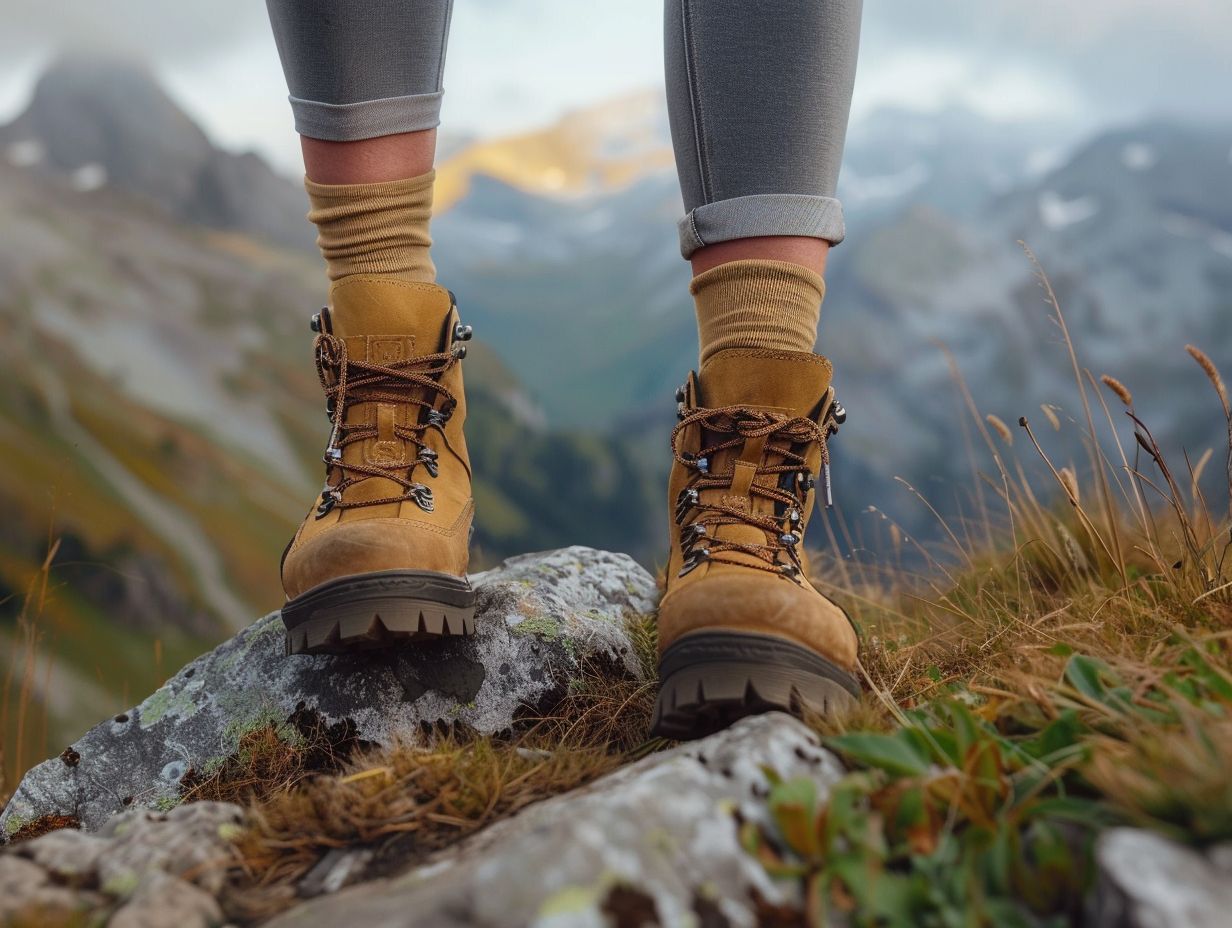
1. How can I prevent blisters while hiking?
To prevent blisters while hiking, it is important to wear proper fitting hiking shoes or boots. Make sure you break in new shoes before going on a long hike. Additionally, wear moisture-wicking socks and use a lubricant, such as petroleum jelly, on areas prone to blisters. Keeping your feet dry, changing socks regularly, and taking breaks to air out your feet can also help prevent blisters.
2. What should I do if I feel a blister starting to form?
If you feel a blister starting to form, stop and address it immediately. You can apply moleskin or a blister pad to the affected area to prevent further irritation. If you do not have these items, cover the blister with a bandaid or duct tape to protect it from rubbing against your shoe.
3. How do I treat blisters that have already formed?
If you already have blisters, it is important to treat them properly to prevent infection. Clean the area with soap and water, and then cover the blister with a bandaid or moleskin. If the blister has popped, clean it with an antiseptic and cover it with a bandaid. It is important to keep the blister clean and dry to promote healing.
4. Can I continue hiking with blisters?
In most cases, it is not recommended to continue hiking with blisters. The constant rubbing and pressure from your shoes can worsen the blisters and lead to infection. If you must continue hiking, make sure to properly treat the blisters and take frequent breaks to air out your feet.
5. Are there any natural remedies for blisters?
Yes, there are a few natural remedies that can help with blisters. Applying aloe vera or tea tree oil to the affected area can provide soothing and healing properties. You can also soak your feet in a warm saltwater bath to reduce inflammation and promote healing.
6. When should I seek medical attention for blisters?
You should seek medical attention for blisters if they are large, painful, or showing signs of infection such as redness, swelling, or pus. If you have diabetes or a weakened immune system, it is important to seek medical attention for blisters to prevent further complications.

